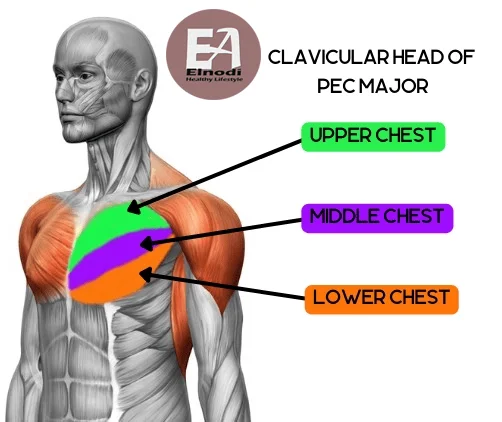Do you want to see serious results from your bench press workouts? If so, you need to be doing them with proper form. Use these decline dumbbell bench press tips to achieve the right technique.
Bench pressing is a very important exercise for building muscle and strength. However, performing it improperly can lead to ineffective results. Follow these tips for perfect form and you’ll see a big increase in muscle strength and size.
Following the correct bench press technique will not only result in better workouts but increased StrengthIQ as well. This means that your overall ability to lift heavy weights will be enhanced. When using proper form, you won’t be putting any unnecessary stress on your wrists, elbows, or shoulder joints. These are all potential weak links that can quickly ruin a workout routine.
What is The Decline Dumbbell Bench Press?
A version of the decline bench press is the decline dumbbell bench press. You provide yourself with a wider range of motion when performing a decline bench press by employing dumbbells. Dumbbell work also needs a lot of shoulder stability, thus it uses more muscle fibers than barbell work to stabilize the body.
A chest workout that also subtly works the shoulders, triceps, and core is the decline dumbbell bench press. Those aiming to develop the lower region of their chest can benefit from the decline angle employed during a decline dumbbell bench press.
Benefits of the Decline Dumbbell Bench Press
We frequently turn to the obvious workouts for chest development: flat bench, incline press, and flies. While these movements are important, they aren’t always enough to stimulate and grow all parts of our pecs.
The decline bench press is an underutilized technique that provides far more benefits than most people realize. Decline pressing is a movement in which you secure your legs in a higher position by placing a bench in a decline position. In doing so, you press the weight at an unusual angle, emphasizing the lower half of your chest.
Doing the decline press with a pair of dumbbells is even more beneficial. You train through a slightly longer range of motion, and you force both sides of your body to work independently. The overload potential is impressive, you emphasize both pectorals evenly, and you reduce the risk of side-to-side imbalances from occurring.
What muscles does Decline Dumbbell Bench Press activate?

The chest (pectorals) is the primary muscle area worked during a dumbbell decline bench press. Our chest muscles attach to the humerus (the major upper arm bone) and cover the front of the upper torso. Because of their position, origin, and insertion points, our pectorals work during arm adduction and extension. Because of muscle fiber direction, declining to push accentuates the lower and middle portion of our pecs. Lower chest fibers migrate horizontally and upward. Exercising our arms in the other direction (horizontally and downward) stimulates that area well.
The dumbbell decline press is also fantastic for the front deltoid head, which assists our chest in arm extension. The middle deltoid head also works to some degree but mostly to keep the shoulder joint stable.
The decline bench press engages the triceps in addition to the pecs and delts. Our triceps contribute considerably as we press the dumbbells up, helping us to stretch our arms and complete each repetition. The closer we go to the top, the more our triceps take control of the movement.
The rectus and transverse abdominis, internal and external obliques, and glutes also contribute to the decline press. Collectively referred to as the ‘core,’ these muscles contract isometrically to keep us in a stable position as we press.
Decline Dumbbell Bench Press Instructions

- Using a neutral grip (palms facing in), pick up the dumbbells from the floor. Place the dumbbell ends in your hip crease and sit on the edge of a decline bench.
- Lay back and bring the weights close to your chest to get into position. Take a deep breath and press the dumbbells to lock out at the top once you’re in position.
- Lower the dumbbells as far as you can comfortably go (the handles should be roughly level with your chest).
- Push the dumbbells back up to the starting position by contracting the chest.
- Repeat until the desired number of repetitions has been reached.
Dropping the dumbbells to the side is discouraged unless you are experienced with the technique or using excessively heavy weights.
Ideally, you should twist the dumbbells back to neutral (palms facing each other), raise your knees up so the ends of the dumbbells touch your thighs, and then rock back to an upright, seated position using the weight of the dumbbells.
Decline Dumbbell Bench Press Tips
- Maintain extra tension in the pecs by not completely locking out the elbows.
- Maintain a 45-degree angle with the weights to keep the elbows in a neutral posture.
- Allow the dumbbells to collide at the peak of each rep; bouncing them together may cause you to lose shoulder stability and harm yourself.
- Squeeze the dumbbells as tightly as possible to improve “irradiation,” a characteristic that promotes improved shoulder stability.
- Maintain a safe position for your shoulders by pinching your shoulder blades together.
- Consider pushing yourself away from the weights rather than pushing the weights away from you.
- If you are experiencing pain within the shoulder joint (particularly in the front), consult your doctor.
- your shoulder blades are slightly retracted and try to keep the shoulder girdle “packed”.
- Ensure you maintain some tension in your abs and don’t allow your lower back to excessive arch.
- Keep your feet flat on the floor and don’t allow the lower body to move during the set.
Mistakes Dumbbell decline chest press
The most common decline press mistake is applying too much weight. Trainees, for example, frequently reason that if they can incline or flat press a weight, they should use it for the decline press. As previously said, the decline press takes some getting accustomed to, so begin with a lighter weight that allows you to practice good technique comfortably.
Another mistake to avoid with the decline press is flaring your elbows out. Doing so is wrong because it puts your shoulders in a weak and compromised position. Plus, flared elbows prevent you from lifting as much weight as possible because the dumbbells are farther from your body. To avoid this weak and compromised position, keep your elbows tucked in throughout each repetition.
You should also avoid rounding your shoulders while dropping bench pressing. Setting up on the decline bench is more difficult and can result in the rounded upper back pushing. The concern is that rounded shoulders are more unstable, which might be dangerous when using larger dumbbells. Before each set, draw your shoulder blades back and dig them into the bench to avoid this mistake.
Summary
Dumbbell decline chest press exercises are highly suggested for anyone looking to increase upper body strength and muscular mass.
It is simple to execute and does not necessitate any additional scientific knowledge or expensive equipment. You will experience benefits if you continuously perform dumbbell decline chest press exercises with other variations of chest press.





